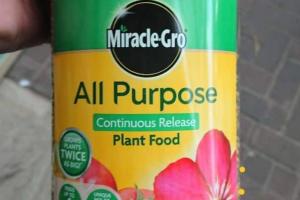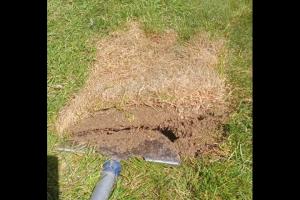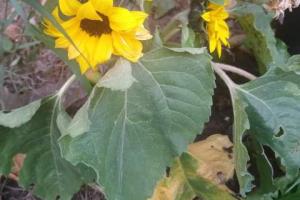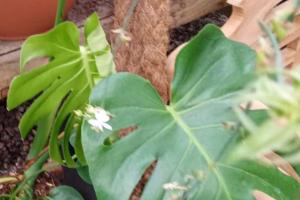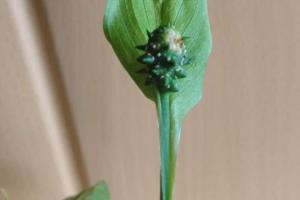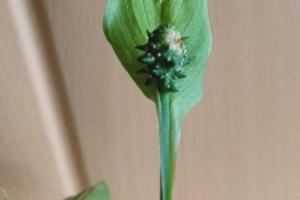Caring for Your Philodendron Melanochrysum: 10 Tips for a Healthy Plant
Welcome, plant enthusiasts, to the lush world of Philodendron Melanochrysum care! If you’ve fallen under the spell of this captivating tropical beauty, you’re in for a treat. In this article, we’ll dish out some top-notch tips to ensure your Melanochrysum thrives and dazzles.
What is Philodendron Melanochrysum?
The Philodendron Melanochrysum, a member of the Araceae family, is a captivating tropical plant that has captured the hearts of plant enthusiasts around the world. Its scientific name, Philodendron Melanochrysum, gives insight into its unique characteristics, while its lush appearance and numerous benefits make it a sought-after addition to indoor gardens.
Classification and Botanical Features
The Philodendron Melanochrysum belongs to the genus Philodendron, a diverse group of plants known for their striking foliage and adaptability. Within the genus Philodendron, the Melanochrysum is part of the subgenus Meconostigma, which includes species characterized by aerial roots and large, velvety leaves.
Origin and Native Habitat
The Philodendron Melanochrysum is native to the lush and diverse rainforests of Central and South America. Its natural habitat spans countries like Colombia and Ecuador, where it thrives in the tropical undergrowth beneath the dense canopy of towering trees. In this native environment, it has adapted to the dappled sunlight, high humidity, and rich, well-draining soils.
This background provides insight into its care requirements, as it has evolved to flourish in conditions that mimic the filtered light and moisture-rich air of its rainforest home. As a houseplant, replicating these conditions helps ensure the health and vitality of the Philodendron Melanochrysum.
Distinctive Appearance
The most striking feature of the Philodendron Melanochrysum is its leaves. They are large, heart-shaped, and covered in a plush velvet-like texture. The deep green coloration of the leaves serves as a backdrop for stunning golden-yellow veins, which radiate from the central vein, creating an eye-catching contrast. This unique combination of velvety texture and vibrant colors makes the Melanochrysum a true showstopper among houseplants.
Growth Habit
Philodendron Melanochrysum is a climbing plant by nature, which means it tends to produce long, vining stems. When cultivated indoors, it benefits from the support of a stake or trellis to help it maintain an upright form and encourage its upward growth. Its vines can reach impressive lengths, making it an excellent choice for creating a lush, tropical ambiance in your home.
Toxicity
The Philodendron Melanochrysum contains calcium oxalate crystals, which can be toxic when ingested. While it’s generally considered mildly toxic, it can cause irritation, burning sensations, and discomfort if chewed or eaten by people or animals. Common symptoms include mouth and throat irritation, drooling, and digestive upset. In most cases, the effects are not severe and can be managed with prompt medical attention. To ensure safety, it’s best to keep Philodendron Melanochrysum out of reach of children and pets, minimizing the risk of ingestion. While it may not be highly toxic, preventive measures are crucial to prevent any potential discomfort or harm.
Benefits of Philodendron Melanochrysum
Beyond its aesthetic appeal, the Philodendron Melanochrysum offers several benefits that make it a popular choice among plant enthusiasts:
1. Air PurificationLike many houseplants, Philodendron Melanochrysum contributes to indoor air quality by removing pollutants such as formaldehyde and xylene from the air. Its large leaves provide a substantial surface area for this air-cleansing process, helping to create a healthier indoor environment.
2. Aesthetic EnhancementWith its luxurious foliage, the Philodendron Melanochrysum adds a touch of elegance and natural beauty to any indoor space. Its unique texture and vibrant coloration make it an attractive focal point in homes, offices, or even public spaces.
3. Stress ReductionNumerous studies have shown that being around indoor plants like the Philodendron Melanochrysum can have a calming effect and reduce stress levels. The act of caring for a living plant can also promote a sense of well-being and relaxation.
4. Low MaintenancePhilodendron Melanochrysum is relatively easy to care for, making it an ideal choice for both experienced and novice plant enthusiasts. It is adaptable to a range of indoor conditions and can thrive with minimal effort.
5. Natural AmbianceThis tropical beauty brings a slice of the rainforest into your home. Its lush, tropical appearance creates a soothing and inviting atmosphere, making it an excellent choice for interior decoration.
6. PropagationThe Philodendron Melanochrysum is a plant that keeps on giving. You can easily propagate it through stem cuttings, allowing you to share the joy of this beautiful plant with friends and family or expand your own collection.
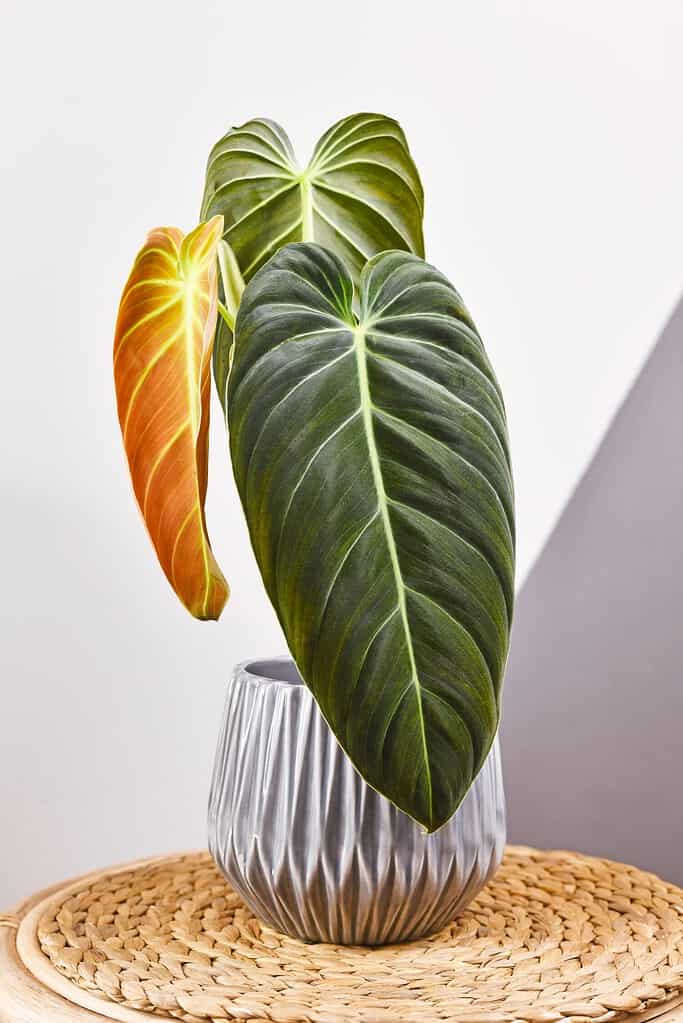
©Firn/Shutterstock.com
Can I Grow Philodendron Melanochrysum Plants Outdoors?
To put it simply, no. The Philodendron Melanochrysum is primarily an indoor plant. It thrives in controlled indoor environments where conditions can be managed to mimic its native tropical habitat. This plant is not suited for outdoor growth in most regions, as it’s sensitive to cold temperatures. Philodendron Melanochrysum cannot withstand frost and is not assigned a specific hardiness zone since it is not intended for outdoor cultivation in temperate climates. It’s best to keep this tropical beauty indoors, where you can provide the necessary care and protection it needs to thrive and showcase its remarkable foliage.
Are Philodendron Melanochrysum Plants Hard to Care For?
The Philodendron Melanochrysum is definitely a captivating houseplant that has garnered attention for its unique beauty. When it comes to the question of whether it is a difficult plant to grow and maintain, the answer lies in a combination of factors, including its natural adaptability and the care it receives from its owner.
In terms of its intrinsic characteristics, the Philodendron Melanochrysum is relatively forgiving. It is native to the tropical rainforests of Central and South America, where it thrives in the dappled sunlight beneath the forest canopy. This background equips it with a degree of adaptability to indoor conditions, where it can thrive when provided with the right care.
However, like all plants, the Philodendron Melanochrysum has its preferences and needs. To ensure its well-being, it’s crucial to consider factors such as light, water, humidity, and temperature.
In essence, while the Philodendron Melanochrysum does have specific care requirements, it can be considered a moderately easy plant to grow indoors, especially for those who are willing to pay attention to its needs. It is forgiving of occasional lapses in care and can bounce back with proper attention. Novice plant enthusiasts can find success with this stunning houseplant by learning and adhering to its care guidelines.
With this in mind, let’s look at some of those care guidelines so that your plant will grow to be strong and healthy.
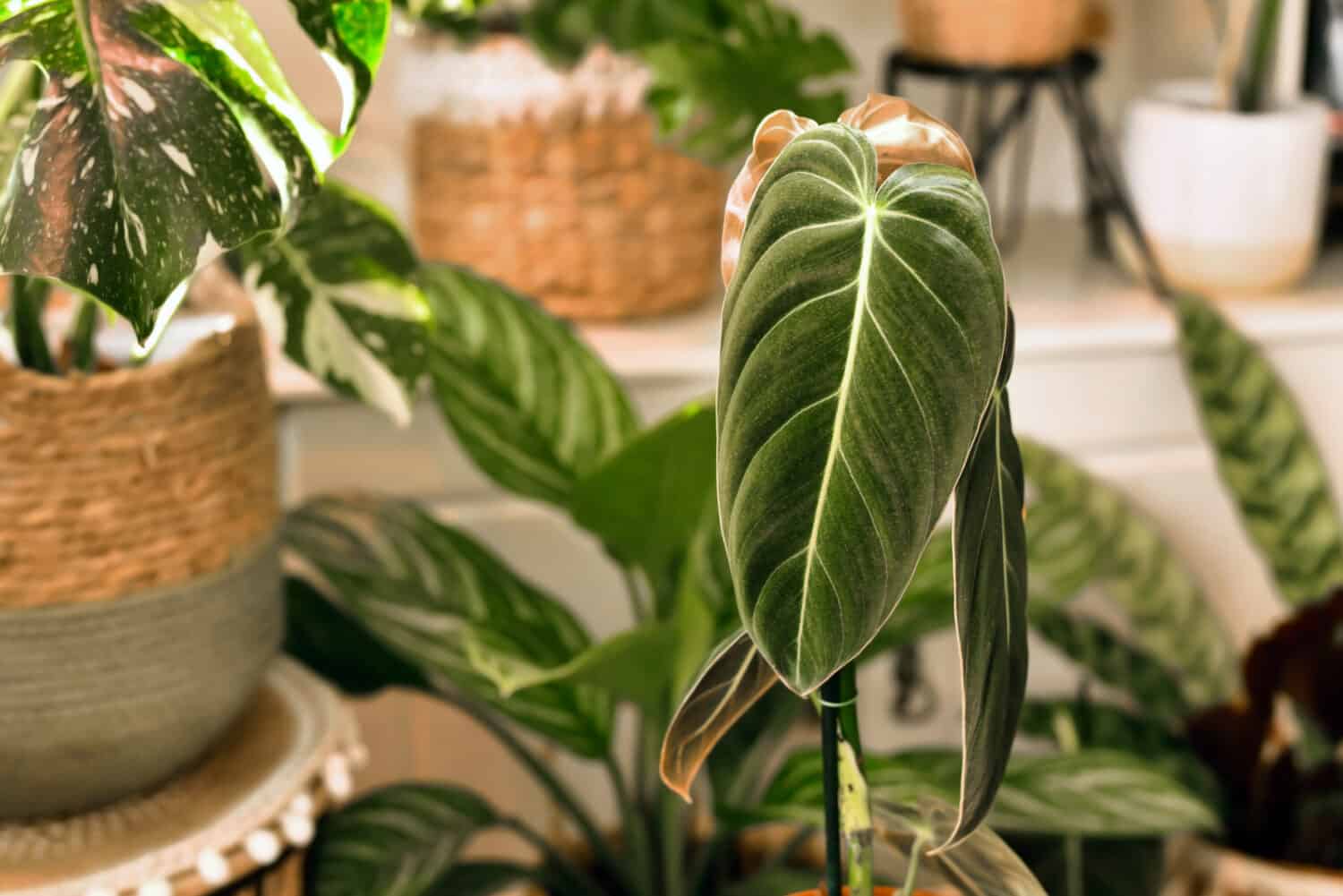
©Shadow Inspiration/Shutterstock.com
Tips for Caring for Your Philodendron Melanochrysum
Philodendron Melanochrysum is a magnificent tropical plant that can bring a touch of lush greenery and natural beauty to your indoor space. With its large, velvety, heart-shaped leaves adorned with striking golden veins, this particular Philodendron variety is indeed a sight to behold. However, like any living organism, it requires proper care and attention to flourish and thrive. The following tips can really help you keep your Philodendron in tip-top shape.
1. Choosing the Optimal Location
The first and foremost consideration when caring for a Philodendron Melanochrysum is selecting the ideal spot within your home. These plants are indigenous to the rainforests of Central and South America, where they thrive under the dappled sunlight of the forest canopy. To replicate this environment, it’s essential to place your Melanochrysum in an appropriate location.
Indirect SunlightWhile these plants appreciate bright, filtered light, they are sensitive to direct sunlight, which can scorch their delicate leaves. Therefore, it is advisable to position your plant near a window with a sheer curtain or in a spot where it receives gentle, indirect sunlight.
Avoid Extreme ConditionsBe mindful of your plant’s surroundings. Keep it away from drafts, such as those caused by air conditioning vents or radiators, as these abrupt temperature changes can adversely affect its health. Maintaining a stable indoor temperature within the range of 65 degrees F to 80 degrees F is ideal.
2. Adequate Watering
Proper watering is a critical aspect of Philodendron Melanochrysum care, and mastering this aspect can significantly impact the well-being of your plant.
Monitor Soil MoisturePhilodendron Melanochrysum prefers soil that is slightly moist but not waterlogged. To determine when to water, gauge the moisture level by checking the top inch of soil. Water your plant when this top layer feels dry to the touch. Ensure that you use a well-draining potting mix to prevent water from accumulating around the roots.
Thorough WateringWhen it is time to water, provide your plant with a thorough soaking until water begins to flow from the drainage holes at the bottom of the pot. Remember to empty the saucer beneath the pot after each watering to prevent the roots from sitting in standing water, which can lead to root rot.
Adjust for Seasonal VariationsThe frequency of watering may vary with the changing seasons. During the active growing season in spring and summer, you may need to water more frequently. In contrast, reduce the frequency during the dormant months of fall and winter when the plant’s growth slows.
3. Humidity Considerations
Philodendron Melanochrysum originates from high-humidity rainforest environments. To ensure its well-being in your home, it is essential to provide adequate humidity.
MistingRegularly mist the leaves of your plant with room-temperature water. This practice increases the humidity around the plant and mimics the conditions of its natural habitat. Alternatively, you can place a tray filled with water and pebbles near your Philodendron to raise the moisture level in the air.
HumidifiersIf you reside in a dry climate or your indoor space has exceptionally low humidity, consider using a humidifier to maintain optimal moisture levels. This can greatly benefit the overall health of your Melanochrysum.
4. Pot Selection and Repotting
Choosing the right pot and knowing when to repot your Philodendron Melanochrysum is crucial for its growth and development.
Appropriate Pot SizeWhen initially potting your Melanochrysum, select a container that is only slightly larger than its current root ball. These plants tend to thrive when slightly root-bound.
RepottingAs your Philodendron Melanochrysum matures, it may become root-bound or outgrow its current container. In such cases, it is advisable to repot the plant every two to three years. When repotting, choose a new container with adequate drainage holes and use a well-draining potting mix enriched with organic matter.
5. Pruning and Maintenance
Pruning is an essential aspect of maintaining your Philodendron Melanochrysum and ensuring its optimal health.
Trimming Dead or Yellowing LeavesRegularly inspect your plant for dead or yellowing leaves, as these can detract from its overall appearance and health. Use clean, sharp scissors or pruning shears to snip them off at the base.
Promoting Bushier GrowthIf you desire a more compact and bushier appearance for your Philodendron Melanochrysum, consider pinching or cutting back the stems. New growth will emerge from the nodes just below where you make the cut, encouraging a fuller look.
6. Fertilization
Fertilization is crucial for the health and vitality of your Philodendron Melanochrysum.
FrequencyDuring the active growing season in spring and summer, feed your plant with a balanced, water-soluble fertilizer approximately every four to six weeks. However, reduce or eliminate fertilization during the dormant months of fall and winter, when the plant’s growth naturally slows.
DilutionAlways follow the recommended dilution instructions on the fertilizer packaging to avoid over-fertilization, which can harm your plant.
7. Pest and Disease Management
Vigilance against common pests and diseases is essential to prevent and address potential issues.
Regular InspectionRoutinely examine your Philodendron Melanochrysum for signs of pests such as spider mites, aphids, or mealybugs. If you observe any of these pests, take prompt action to treat your plant with appropriate measures, such as insecticidal soap or neem oil.
Preventative CareMaintain good plant hygiene by periodically wiping the leaves with a damp cloth to remove dust and deter pests. Additionally, avoid overwatering, as excess moisture can lead to root rot and other fungal issues.
8. Providing Structural Support
Due to its vining nature, Philodendron Melanochrysum often benefits from structural support. Consider providing a stake or trellis to support your plant and encourage it to climb. Gently tie the stems to the support structure using soft plant ties, helping your Philodendron maintain an upright and visually appealing form.
9. Propagation
If you wish to propagate your Philodendron Melanochrysum or expand your collection, there are methods to consider.
Stem CuttingsThe most common method of propagation involves taking stem cuttings with at least one node and placing them in a jar of water until they develop roots. Once roots are established, transplant the cuttings into pots filled with a well-draining soil mix.
DivisionAnother method of propagation is division, which can be done when repotting an established plant. Ensure that each divided section has both roots and stems to increase the chances of successful growth.
10. Patience and Observation
Caring for a Philodendron Melanochrysum can be a rewarding and fulfilling experience. By providing the right environment, watering conscientiously, maintaining appropriate humidity levels, and addressing any issues promptly, you can enjoy the lush beauty of this remarkable tropical plant in your own home.
Remember that Philodendron Melanochrysum care is not an exact science, and each plant is unique. It may take some time to establish the ideal care routine for your specific Philodendron. The key is to be patient, attentive, and observant. Regularly monitor your plant’s health and adapt your care regimen based on its response. With care and dedication, your Philodendron Melanochrysum will thrive, enhancing the aesthetic and natural charm of your indoor space. Happy planting!



